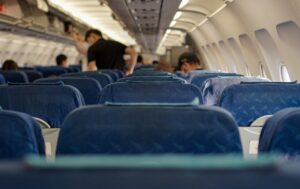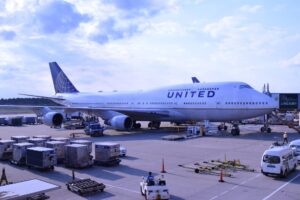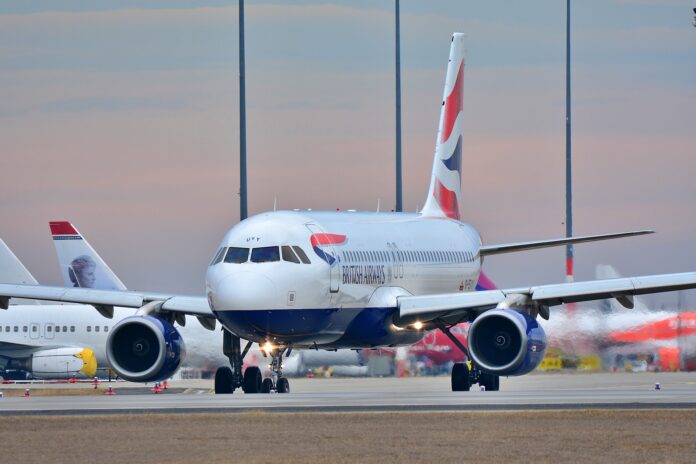Ghost flights. It’s an intriguing term and one that has been receiving a lot more attention over the past few years. Loosely defined as an air voyage operating with less than 10% of its seats occupied, “ghost flights” are an environmental concern that looms over the aviation industry. But just how grave is the issue?
In September 2022, The Guardian newspaper reported that the United Kingdom had witnessed 5,000 flights categorised as “empty” and a whopping 35,000 with occupancy rates below the 10% mark since 2019. These statistics covered the period of the pandemic, which saw some highly irregular flight patterns, but they nonetheless shocked the public as the story was picked up globally with tens of thousands demanding that airlines explain these actions.
Strongly denied
The International Air Transport Association (IATA) immediately responded saying airlines don’t embark on such journeys without a reason. IATA insisted that the analysis in The Guardian omitted a crucial detail, that many of these flights served as cargo carriers, transporting vital goods, including vaccines and protective equipment, during the pandemic and that the importance of the cargo demand and humanitarian assistance justified operating these flights, even with limited passenger numbers.
Similarly, IATA urged, some flights were repatriation missions or intentionally restricted passenger counts to comply with COVID-19 regulations. Additionally, there were flights dedicated to ferrying aircraft to maintenance facilities or, as witnessed during the pandemic, relocating a substantial number of planes to storage.
For their part The Guardian insisted that these Ghost flights were down to something else entirely, a series of rules put in place by airports to protect their income, known as the 80-20 ‘use-it-or-lose-it’ rule. Airports have these rules in place during regular flight periods to ensure maximum use, and income and airlines which do not fly as many slots as they have booked stand to lose them to others who might do so.
While such rules do indeed exist, they were not designed to function during the strange Covid period and the 95% drop in demand that ensued. It then emerged that in the UK, slot rules had been suspended, mitigating this concern. While there was a risk of surplus flights in the EU due to the rapid restoration of higher slot utilization rates by the European Commission following the end of the pandemic, during the pandemic, slot rules were, for the most part, flexible enough to avert significant issues with ghost flights.
When asked, Willie Walsh, IATA’s Director General, categorically stated, “I’m not aware of any airline company that I’ve worked with deliberately operating an empty flight simply to maintain a slot.”
The EU steps in with proposed regulations

While the image consumers had of thousands of empty flights flying back and forth over their heads turned out to be little more than an imaginative fiction, it has nevertheless, raised crucial questions regarding slot allocation rules. The European Union is presently reevaluating its Slot Regulation, with consultations underway, possibly leading to rule revisions later this year.
While the revision primarily focuses on broader aspects such as competition, accessibility, and capacity, it also considers the role of slot regulations in promoting environmentally friendly aviation. IATA has rejected these proposals, saying that regulating slots based on green concerns would have the opposite effect to what is intended, making the industry less efficient and raising the overall carbon generated. Instead, they say, they should be left to move themselves toward net-zero CO2 emissions.
Lara Maughan, IATA’s Head of Worldwide Airport Slots, aptly notes, “The pandemic was an exceptional period, and extrapolating lessons or making policy changes based on the industry’s activities during this time would be a colossal mistake.” She cautions against meddling with the slot process to encourage greener aviation in theory, as it could introduce complications with minimal environmental gains and potentially detrimental effects.
A key reason for this caution is the globally coordinated nature of the slot system. Airlines operating between two slot-coordinated airports need to adhere to a uniform set of rules to optimally align demand with their schedules. If one country insists on certain aircraft types for environmental reasons, airlines might have to use less optimal planes for routes, regardless of demand – a narrowbody over a widebody, for instance. This could affect consumer choices and potentially disrupt other routes that could have benefited from the original aircraft choice.
IATA explains that before the pandemic, the slot system was contributing to more efficient capacity utilization, expanding consumer options, and guaranteeing dependable schedules. Attempting to micromanage the process at a few globally significant, slot-restricted airports would merely shift aircraft elsewhere, resulting in no overall reduction in emissions and negatively impacting the advantages of air travel for passengers and the economy.
“Far from being beset by ghost flights, the overall efficiency of air transport was on an upward trajectory, with global passenger load factors reaching an all-time high of 83% (85% in Europe) in 2019,” the organisation says. “After the pandemic-induced lows, load factors rapidly rebounded, with Europe once again reaching an 85% load factor in September 2022.”
Are there solutions?

So, what’s the solution? According to IATA there are two solutions, firstly to ensure slots are used as efficiently as possible, by giving airlines more flexibility, particularly during crises or demand fluctuations, and secondly, by allowing airlines to implement other, more successful and meaningful green strategies.
When it comes to sustainability, addressing industry emissions at the source – the engines – remains the most effective approach. That’s why the industry is laser-focused on reducing CO2 through sustainable aviation fuels (SAF), groundbreaking zero-emissions technologies, and optimizing flight distances through more efficient air traffic management. Other solutions outside the sector, like offsetting and carbon capture, also hold importance.
For the average traveller, the knowledge that Ghost Flights do not exist should be comforting enough. The added knowledge that the industry is now in the crosshairs of regulators and forced to move as quickly as it can towards a greener future, is the absolute icing on the cake.


